|






We wish to express
gratitude to all of you, our unnamed friends, who have helped us creating this web pages.
Powered by Risjak
| |
Founder's portrait of Stefan Nemanja, the
Serbian Grand Prince ("Veliki Zupan"), who ruled from 1168 to 1196, then
abdicted to become the monk Simeon and retire to his foundation, Studenica. Fresco: 1568,
west bay of the nave, church of Virgin Mary.
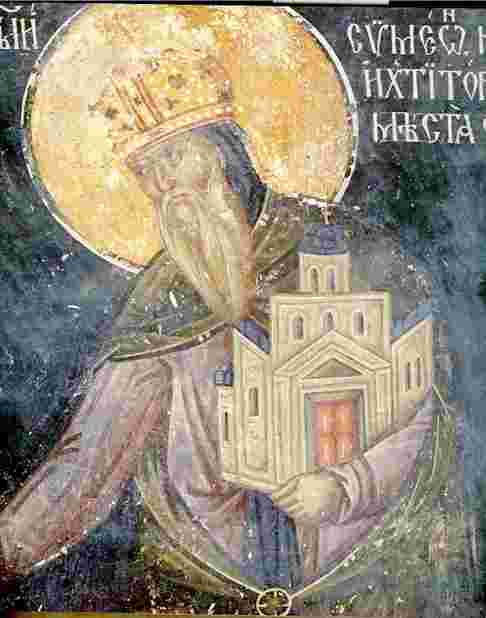
St. Sava, son of Stefan Nemanja, abbot of Studenica c. 1207 to
1214, and later first archbishop of the autocephalous Serbian archbishopic (1219-1233).
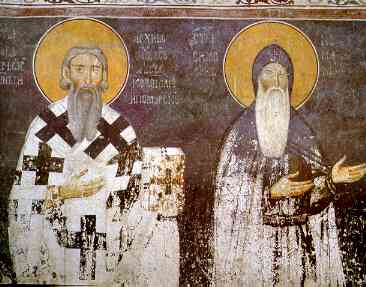
Sava, canonized as a saint, died in 1236. Right: St Simeon
Nemanja, fresco, c. 1313/1314, the nave, King's church.
|
|
View of the altar area, enclosed by a high
iconostasis of later date.
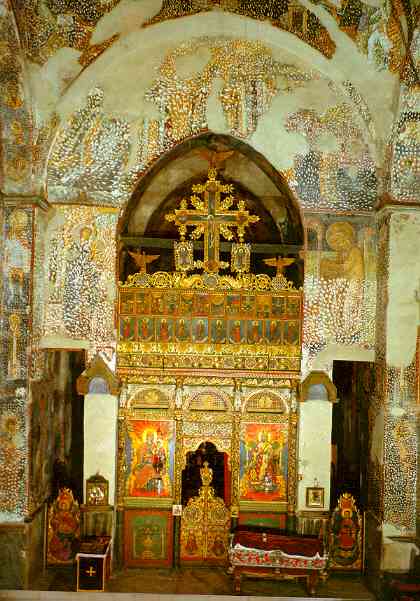
The altar screen can be approximatively reconstructed with the aid of some preserved
fragments and traces. Like the altar area itself, the screen which stood in front of its
central part followed the customary design in contemporary Byzantine architecture. The
royal doors in the middle of the screen were flanked by small stone columns. To their left
and right were closure slabs, forming a low wall.
|
|
West wall of the nave of the church of the
Virgin Mary, viewed from the eastern side. In the centre is the doorway between the nave
and Nemanja's narthex.
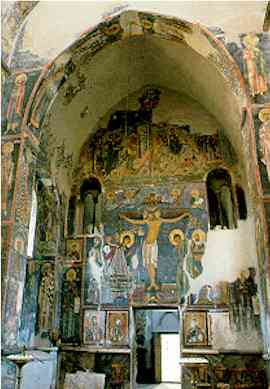
|
|
Recent studies have focussed on the actual solutions
adopted, previous iconography analysis having given modest results, mostly going no
further than the generalities of Western European and Byzantine art. Attention has been
paid to the west front, particularly the splendid main portal, but also to the two-light
windows and small consoles beneath the arcading.
|
|
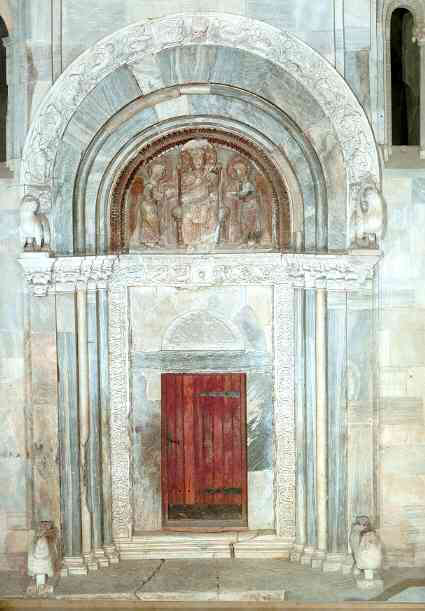 There
are two thematic wholes in the portal sculpture, one comprising the tympanum and inner
frame, and the other the outer frame. The tympanum contains the patron of the church, the
Virgin Mary enthroned with Christ on her lap and flanked by two angels, identified in a
Serbian Cyrillic inscription as the archangels Michael and Gabriel. The Virgin is
presented as she appears in Byzantine paintings in the semi-dome of the apse.
On the inner side of the portal frame are the relief figures of Christ (on the lintel)
and the apostles (on the piers), symbolizing Christ’s Second Coming.
|
|
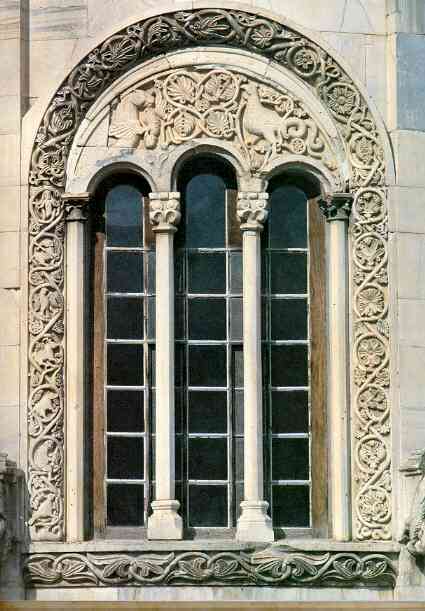 Apart
from the main portal, the three-light window on the central apse, remarkable for its
refined conception and beauty of workmanship, is the finest single feature of the church
of the Virgin Mary. Four colonnettes support the round arches above the apertures and the
tympanum. The window is framed by a broad band of relief ornamentation and has decorated
frieze below it. On both sides of the lower part of the window stand consoles in the form
of seated human figures, as if part of an uncompleted or subsequently destroyed outer
frame, which may have consisted of two colonnettes and wide projecting arcade.
|
|
|












